|
I was rather looking forward to this movie ever since I first heard about it being made.
I'm not entirely sure what I expected, but let's talk about what I got out of watching it. First off, it stands to mention that even in this day and age, it is still somewhat revolutionary to have a movie with lesbian characters played by lesbian characters. (Although, yes, technically, allegedly, in the movie one of them claims to be bi.) Secondly, this is very much a sort of anti-romance romantic movie. Lesbians and crime thing has been done before, most notably in the stellar Bound, but wherein Bound was sleekly stylish, LLB is as raw and gritty as they come. Complete with ALL the worst 80s hairstyles form a particularly grimy look. Set in 1989, it tells a story of a rather aloof gym manager (K.Stew) who falls hard for an aspiring female bodybuilder (Katy O'Brian and her insane muscles.) Both feature atrocious hair and a devil may care approach to personal habits: one smokes, one has no qualms about shooting up with 'roids to beef up. As it turns out, K. Stew's Lou is actually the daughter of the local crime boss/arms dealer/very dangerous man and a sister to a pathetically-addicted-to-love woman who lets her husband repeatedly beat her to a pulp. That husband, an impressively slimy Dave Franco, is also the guy the bodybuilder woman sleeps with to get a job. (Maybe she is bi? She certainly doesn't seem to be into it.) Nevertheless, she is very comfortable using people to get what she wants i.e. sleeping with Lou immediately gets her a free room and board. Lou is too enamored to care. So much so that when her jacked-up-on-'roids lover commits a murder, Lou covers it up, starting a dangerous trend in their relationship. And on it goes, one crime after another, as the entire thing rapidly spirals out of control. All in the name of love. Presumably. Because honestly while the crime aspect was perfectly well done, I wasn't sold on the love story here. Ironically, despite the on-point casting, there didn't seem to be much chemistry between the leads. As a viewer, I don't care about messaging, nor do I think it is the movie's job to serve as a message platform. Which is to say, I don't care if gay characters are played by straight actors and vice versa. It's all ACTING. Just make sure the leads have good chemistry so I can believe their connection. And I've seen straight actors do gay love stories better than this. Sorry, love. Don't mean to leave you lying there bleeding. Also, what is up with bodybuilding? Why would anyone want to do that to their bodies? It looks hideous, on both genders. And oh, so unsexy. (On a side note, Kate O'Brian has stated that she had to audition for her role 6 times. Seriously? How many other actresses do we have out there that look like that? All in all, the movie is entertaining, compelling, and only occasionally does it A24s into self-consciously, precocious territory. But I'm not in love.
0 Comments
I definitely watched Sausage Party the movie whenever it came out on streaming, but it wasn't particularly memorable. I mean, I remembered a bunch of food gags and a ton of food sex, but not the plot.
And I wouldn't have known or cared that I had forgotten the plot until the TV show came out. And, sure enough, it happened on a week so slow that there didn't seem to be anything more amusing to watch. Eight (mercifully brief) episodes later, I am writing this review. The food has had its day. They killed all the humies (cute) and took over the world. And promptly realized they may not be particularly equipped to deal with their newfound freedom. Moreover, they slowly come to realize that they may not be much better than their former archnemeses when it comes to governing themselves. Despite the best efforts of the eponymous sausages, Foodtopia devolves into a brutally divided dictatorship quickly enough. The political satire is definitely there, but the show doesn't seem to quite commit to the bit, opting for gross-out sex gags instead. All in all, this is, both in substance and production, VERY much a sausage party. You can practically hear Seth Rogen's famous stoner guffawing in the background. The puns rule the day here. Some are clever, a lot are pure groaners. And in the end, (SPOILER ALERT) as if to punctuate just how much of a sausage party it is, they kill the main (and one of the only) female characters, who also happens to be the best and most likable of them all. It's a Game of Thrones thing through and through, where an awesome female character is sacrificed so that the males can resolve the plot among themselves. (OVER.) Overall, the show is kinda sorta fun of a very lowbrow variety. But you can't help but think the entire time that the creators are having more fun than the audience. Either way, it worked. Season two is in development right now. Because hot dogs don't have to be gourmet to be enjoyed. Everyone (with a brain) knows Hollywood is a pandering, cliche-ridden apparatus more interested in what sells than telling original stories. But every so often a reminder of it so salient that it seems worth talking about.
Enter The Idea of You and A Family Affair. Both movies came out at roughly the same time, the former on Prime and the latter on Netflix. Both movies feature romances between young famous man and older nonfamous women. Both romances are challenged by the women's daughters. Even the age difference between the leads is the exact same, very precise sixteen years. Seriously. Someone did that. Was this on purpose? Were the two movies meant to be juxtaposed? Frankly, it's difficult to imagine that the target audience for such cinematic nonsense does much juxtaposing. But I am not the target audience, and having sat through both of those, I'm happy to tell you that The Idea of You is infinitely better as far as these things go. So, let's do some comparisons. Both movies are obviously fantasies for middle-aged women. Sad but true. TIOU was actually based on a book written by a woman, and AFA was never a book, but the script was written by a woman. Women drive the market for books and possibly now movies too, so the existence of this fantasy makes sense from a demographic perspective. Apparently, women fantasize about being the exact sort of mature lovers that a sexy, famous boy-toys need. The thing is TIOU feels genuine (or genuinely made-up anyway) with genuine chemistry between the leads. The AFA feels as fake as Kidman's preternaturally youthful appearance. Zac Efron as the self-absorbed movie star known more for his looks and physique than acting (how did he ever flesh out that character?) does his best here, and he is plenty entertaining to watch, but he's stuck acting against an approximately-human-shaped icicle, which can't be easy. Kidman uses her natural Australian accent for the role, but that appears to be the only natural thing about her. Her romancing Zac Efron is just as unnatural onscreen. There isn't much emoting, and all the sex appeal of a translucent, very tall (taller than Efron) twig. There might have bene some genuine chemistry between the two leads back in the The Paperboy, but that was a long them ago. And Joey King as her 24-year-old daughter is kinda sorta funny, but much too annoying about the entire thing and has way too many opinions for someone who still lives with her mother. Wherein TIOU features a normal, albeit more attractive than average, female lead who brings warmth and confusion to the role of a woman swept away by a surprisingly mature boyband star. And her daughter is only sixteen, which makes sacrificing love for her sake a bit more reasonable. Overall, it's down to the simple things like chemistry and personal appeal and casting the right female lead, and TIOU absolutely wins this round. But the point is, this should have never been a competition with rounds to win. There should not be two movies out that similar. Diversity and originality should not be sacrificed at the altar of commercial viability. Write your own story, people. Seriously. Come on. This is a movie that almost works, but, lamentably, the forced precociousness of it consistently overrides its quirky charm.
This story of an El Salvadorian immigrant is clearly meant to be both poignant and whimsical, and it is to an extent, but Torres (who rather impressively wrote, directed, and starred in it) keeps going over the top and getting in his own way. It's very possible he's never subscribed to the less is more theory of storytelling. In the movie, he plays Alejandro, a young man who looks like a child but apparently Torres is in his mid-thirties, go figure. Alejandro acts a bit childlike too, including his walk (one of those over-the-top touches), a ridiculous shuffle seldom seen on a person, let alone an adult. To that effect, he also has a stubborn stray cowlick that is very obviously (you can practically see the product) is styled into place. Ta-da! Whimsy! Alejandro's biggest dream is to create toys for children, though all of his ideas are wildly derivative and similar, including slinkies that don't slink and toy cars whose tires go flat. So, he isn't employed as a toy maker, and instead works for a company that preserves bodies in order to wake them in the future. This is one of the movie's most amusing aspects. Because Alejandro is wildly incompetent, he gets himself fired from a very simple job, thus revoking his visa, leaving his with 30 days to find a new job and a sponsor. Enter Elizabeth, a profoundly unhinged art critic obsessed with preserving the legacy of her dead spouse. Elizabeth is played with gusto and wild abandon by Tilda Swinton as a sort of sad lunatic that is much too unpleasant to people around her to properly feel sorry for her. Alejandro sees her as a ticket to ride to a new visa, so he latches on, promising to help stage her late spouse's art show. It's another thing he isn't particularly good at, but Elizabeth is too out there to notice. Despite the volatile situation and employer, he perseveres, going as far as subletting his crappy rental and resorting to Craigslist prostitution. Also, he turns down a perfectly good legitimate job for an immigration law firm. Instead, in the movie's penultimate (and completely unrealistic even by the movie's loose standards) scene, proving that he has learned a thing or two from Elizabeth's insane belligerence, he pushes his way into his dream job at a famous toy company. The happy ending set far into the future wraps everything up with a neat bow. Ta-da again! So is it worth watching? That depends. Maybe if you're a huge Swinton fan or for the absolutely delightful anthropomorphic representation of Craigslist or you like a trendy politically correct indie. But ultimately, Problemista has too many problems to truly shine. Though, of course, user mileage may vary. As it turns out, you don't need a lot to make a good movie. All you have to do is write a good script, get two quirkily compelling leads, and let the cameras roll.
(The futuristic effects can be added in postproduction. They can even be cheaply cheesy if it's done ironically. In fact, it'll add to its appeal. As it turns out, you can make a romantic comedy that doesn't annoy the viewer or make them feel like their IQ is dropping just by watching or is rife with cringe-inducing cliches. Or at least you can do all that is your name is Michael Lukk Litwak, who wrote, directed, and co-produced this quirky charmer. This amusing indie starring most amusingly named leads Zosia and Aristotle as the eponymous (and rather plain by comparison) Molli and Max spans over a decade and a number of planets as two best friends try to figure out the thing that's obvious to everyone but them - they love each other and should be together. It's the tropiest of tropes, but it works because it's entertainingly futuristic and generally well done. Recommended. The worst thing is that I've already seen this cinematic atrocity ages ago, and the memory of it kept recurring as I watched it again. If anything, the director's cut is worse. Just like the director's cut title is worse. Like laughably terrible. And yes, somehow this is the same Francis Ford Coppola responsible for so many classics. He walked away from making "factory movies" as he put it, but that was his best work. And if this sort of garbage is what he'd rather do instead, well ... sad.
But to be fair, no one liked this,except for the French. So much so that, Coppola hasn't made another movie since *and Twixt was 2011) until the just now out in Cannes, Megalopolis. Apparently, Twixt came out of a dream or rather a nightmare Coppola had, and it is indeed a dreamy nightmare of a movie. It looks oh-so-pretty, showcasing Coppola's ability to juxtapose red against monochromes, but the story is such a freaking mess. The writing doesn't help either. The entire production is basically a pile of self-indulgent, rambling nonsense overpowering a thin, convoluted plot. No stylish cinematography and no acting power could have saved this. The movie is like something made by a precociously gifted goth teen, and frankly, that might be its target audience. I can't imagine who else it might appeal to. You'd think Coppola would have gotten those goth vibes out of his system with Dracula, but no, apparently not. And that was him working with an already (and better) written story. The triple duty here or writing, producing, and directing is obviously too much here and is consequently wildly uneven. Coppola is, of course, historically impressive, but the most impressive thing about this production is witnessing how tediously long and effortful an 80-minute movie can be. What does every handsome young millionaire named Christian want? Apparently, to spank someone. Oh, but there's so much more going on here. To the movie's credit, it goes from shades of grey to something much, much darker in just 80 or so minutes, creating for a very memorable experience indeed.
There are many things that are very, very right with this movie, the first one being how for at least half of it, it plays just like any old boy-meets-girl (on a dating app, such are our times) story. In this case, the boy is beautiful, shy, and disciplined and the girl is sort of a cute mess. The opposites attract, sleep together, and then she discovers that the dog Christian said he had is actually a man living as a dog, suit and all. Christian has a good explanation, but it's still a bit much for Sigrid, so she takes off. Then she realizes that Christian is a millionaire and decides that many zeros can excuse all kinds of weirdness. So their relationship progresses ...until it takes a twist. Fair warning: if you have not watched the movie, you probably want to avoid the rest of this review until you do. So, you know, go watch the movie. Okay, where were we? So turns out the man in the dog suit isn't a friend of Christian's, helped out of kindness, but a prisoner kept by Christian. The man wants Sigrid to save him. and to her credit she tries, But things go very wrong very quickly, spiraling down to the ending so disturbingly dark, it'll see itself into your memory. And that's how you make a horror movie--by subverting expectations, courting controversy, and bravely doing something completely original. No need for big budgets, special effects, etc. The best monsters, after all, are people. The movie is narratively minimalistic with three main characters, all well played by Scandinavian actors I've never heard about. Gard Lokke (Christian) in particular is excellent, oscillating between charm, creepiness, and outright menace. He looks exactly like if Bieber and Bill Skarsgard had a son: preternaturally tall and pretty. And that works amazingly well for the story. The others hold their own. The direction is subtle and clever. Everything here works and well. The Regime is a profoundly curious and ultimately failed project that features every high-quality production staple you may have come to expect from the newly renamed MAX but ultimately falls flat despite all of it.
It looks terrific, it tries (tries is the operative word here) to tell an interesting story, it has a terrific cast led by the always excellent Kate Winslet. So what’s wrong with it, you may ask? Oh, so much. Let me tell you all about it. The Regime is presumably a story of a Central European Dictatorship. While this composited country of origin seems to be small, the show reduces its scale even further by setting the entire thing in a ridiculously over-the-top palace where the regime’s dictator Vernham resides. Chancellor Vernham is as over-the-top as the palace that surrounds her and just as insane. Winslet goes full Drew Barrymore with a pouty sideways lisp to highlight the fact that you’re looking at an educated adult woman, but one whose extraordinary position of power and a staggering plethora of daddy issues has left her somewhat childlike. Daddy’s dead now, though kept semi-reserved in the palace to still chat with, and her husband is too milquetoast. She finds herself a strongman instead in a disgraced soldier and proceeds to fetishize his peasant-brand of masculinity, entrusting his more and more of her care. The parallels between Rasputin and Emperess Alexandra Romanoff are unavoidable here. While the country around them is falling (and tearing itself) apart, the two of them let their relationship play out all of its ups and down to the detriment of themselves and all those around it. And that’s pretty much it, in a way. The thing is, for a show that’s obviously meant to be a political satire, it doesn’t really do that much …of anything. It looks sharp, it’s very well acted, and has some nice lines, but it isn’t especially politically astute or funny for that matter. Tonally, it seems to be all over the place, as if it cannot decide what it wants to be. It is only in the last and best episode that you finally see that is actually just a love story. An impossible love story between two lunatics who fits each other like gloves (that’s a line from the show). Because it only works as a love story. As a satire, it’s a failure. The most important thing here is that it doesn’t make any sense. This is a Central European country where everyone speaks with English accents, except for the male lead who inexplicably has a very noticeably different accent and where mostly everyone has English names (Chancellor Vernham? Seriously? Why?). The result comes across farcical at best and not in a good way. It also completely takes you out of the story’s supposed setting. Yeah, it takes plenty of potshots, occasionally cheap ones, at regional politics at large and dictatorships in general, but there’s so much missing here that overall, it mostly comes across as a missed opportunity to do something great, like a joke told wrongly and left to lie flat. Outside of the terrifically acted out love/madness story between the chancellor and her right-hand man and a very strong final episode (out of six) there isn’t much here to recommend. It is exceptionally tricky to write a review about a show that deals with things like sexual and emotional abuse, because we live in a very touchy world. But I’m going to try anyway.
Mainly because baby reindeer makes an impression. Love it or hate it (or like me, be somewhere in the middle), but it does make an impression. Every decade has its definitive stalker movie. The 80s had Fatal Attraction, the 90s had Single White Female, and so on. The 2020s will have baby reindeer. The emotional rawness of it alone will guarantee that. Modern day and age thrives on emotional rawness, gorges on it. They want to see people turn themselves inside out and eat up the innards offered. It’s rather disgusting but there it is. And Richard Gadd, the multi-talented writer, director, and star of baby reindeer seems to tap right into that unsavory thirst by offering up this seven-episode creative adaptation of his real-life experience. In the show, Gadd plays Donny Dunn, a twenty-seven-year-old loser who works in a pub, lives at his ex’s mom’s place, and pursues a dream of being a standup comedian. The dream has long gone stale, mainly since Donny isn’t all that funny or good at performing onstage . Donny is lovely and sad, and then he meets Martha. Martha is an obviously severely unhinged woman, yet he is so desperate for attention that he continues to encourage her. Martha is in her early forties, morbidly obese, and obviously a liar. None of that seems to give him much of a pause. When Martha’s attention finally turns psychotic, with countless horrendously spelled emails a day, Donny still do much about it. Only when Martha violently attacks Donny’s love interest, does he go to the police, but the way he does it almost guarantees they will not take action. Eventually, Martha moves on to disturbing his parents, which prompts another half-assed attempt of his to stop her. And you know why he endures all of it? As it turns, it’s because he’s dealing with a lot of shame from being groomed and raped five years ago by a male TV producer and his subsequent struggles with his sexuality, which include being uncomfortable with his unbelievably awesome trans girlfriend wonderfully played by Nava Mau. Donny never quite processes his feelings or confronts his abuser. The best he can manage is eventually having a full (and videoed) breakdown onstage which is actually a viable alternative to his crappy comedy. In the end, despite the enormous amount of support, love, and acceptance in his life from his parents, girlfriend, and even his ex and her mom, he still ends up running everything from his relationship to his mental state to his finances. He’s just that weak of a person, which is tragic but also blatantly obvious, completely content (and even actively encouraging) the awful experiences in his life to overwhelm the rest. Which is to say … not a particularly sympathetic character. Is he meant to be? I’m not sure. It’s unusual to have that compelling of a show full of that many terrible people. Donny’s girlfriend is awesome. His parents are pretty great. But most of the show is devoted to him and Martha and their peculiar but definitely mutual obsession. They are these two wretched abused messes that perpetuate the cycle of their abuse on each other. It stands to mention that while it is hinted that Martha was perhaps abused by her parents, Donny was in fact a twenty-two-year-old adult when he got groomed and raped. It was a protracted process, and he went along with it the entire time, coming back for more and more because he was so desperate for fame he thought the man might offer him. Far be it from me to blame the victim, but Donny certainly makes it difficult to sympathize with him. Only in the very end does he finally go to confront his abuser … and ends up having a lovely cuppa instead, leaving with a promise of a potential job. Nor does he ever name the man who has ruined him so in public. So not a confrontation at all. No closure. Nothing. He does manage to put Martha behind bars. Something Gadd did not do in real life because he thought it was wrong to lock up a mentally disturbed person. But is it any sort of a triumph for him? Absolutely not. He is a complete mess, alone, unemployed. Pathetic really, if you cared enough about him. A lot of people in the show do, mostly women, seemingly unconditionally. This is difficult to explain because he does basically look like a baby reindeer. And also weirdly old for his age and definitely old for his character. Throw in factors like broke, sexually, confused, severely in need of a good haircut, all=around failure, etc. and he doesn’t make for much outside of maybe a pet project. Which in a way makes it all the more interesting how watchable the show with a protagonist like that is. I give all the credit to Gadd here, unlike his character, he is genuinely talented. The writing especially is terrific. Worth checking out, this show is certainly one of the smarter, more original things on Netflix. Though they do set the bar low. Ripley is and has always been a uniquely American character. But you have to keep in mind that it was conceived and brought to life by a cranky, unhappy, ex-pat. So what you get in the seemingly ageless series of books that have been inspiring adaptation after adaptation is a profoundly unpleasant character with no gifts outside of mimicry and nothing much to offer but uncomfortable attention that’s quick to turn deadly.
Ripley is a void of a person, and from time to time he tries to complete himself with other things … and people. It isn’t so much that Ripley is unknowable, it’s that there isn’t much to know about him. He’s malleable, adaptable, quick on his feet, and utterly unburdened by conventional morality. In many surface respects, he is very ordinary. It’s what makes him such a good villain. Also, notably, unlike so many other villains who do soliloquys expounding on their motives and reasons, Ripley stays quiet. He simply is. He simply does things. That’s what makes him such an effective villain. Ripley’s creator was notoriously difficult about her character’s screen adaptations. She panned at first then loved Wim Wenders movie. It is very unlikely that she would have enjoyed Mignella’s movie, arguably the most famous one, which glammed up and hollywoodized Ripley into practically a stranger to his origins. But she might have liked this adaptation. Although exhaustively detailed and quite slow, taking eight long episodes to adapt a rather slim book, it nevertheless seems to “get” the novel and its subject. Shut in stunning black-and-white, which gives the beauty of Italy a subtle sinister undertone, and competently cast, it features one of the latest Irish leading men, Scott of Moriarty fame, as the eponymous character. Scott is actually perfect for Ripley. It isn’t just that he’s average looking, it’s that he’s unpleasant looking. He looks like the worst thing (person) to have happened to someone. As Moriarty, he was the worst thing to have happened to Sherlock, and here he is the same to the poor young Mr. Greenleaf. Scott’s Ripley can barely even hold on to his surface charm, which keeps slipping and sliding, constantly exposing him to others, like poor Freddy or poor Marge, who see right through the thin façade. Even Greenleaf catches on eventually, but he is much too nice to address it well or in time. The only person who fails to catch on is the detective investigating the murders. It is jarringly noticeable in the scene where he inexplicably fails to recognize Ripley (whom he’s met before on numerous occasions and talked to extensively) because of—get this—a bit of facial fur, an ugly wig, and some mood lighting. Seriously? Well, sheesh no wonder Ripley gets away with it all to live another day, sneak into another book, another adventure, and likely another season of the TV show. I’d likely watch it, too, because despite being far from perfect, it’s so freaking compelling. And Ripley is too unique of a character not to fascinate. Although in and of himself, he is profoundly unfascinating. Just a two-bit conman with jumped-up ideas and complete absence of conscience. I’m not sure Ripley books would have been published in this day and age. The public has been conditioned and dumbed down to crave a very specific sort of thriller with a very specific sort of protagonist, morals, etc. Even the page count now is curated. Ripley books would be deemed too thin, too male-centric, too amoral. Which is what makes it so great that he survives and goes on to grab attention once again. Like the striking black-and-white cinematography, it’s a lovely reminder of the golden age of publishing, where originality still mattered. And of course now that Ripley’s in the world, he comes back again and again. Because, of course, you can’t keep a good psychopath down. |
Archives
December 2023
Categories |

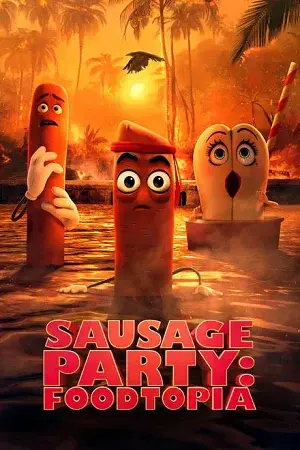

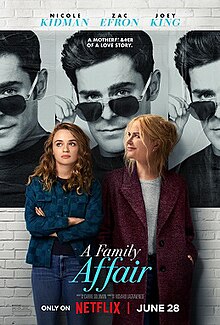
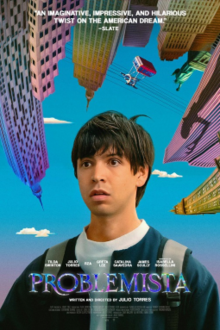
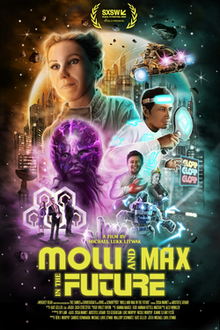
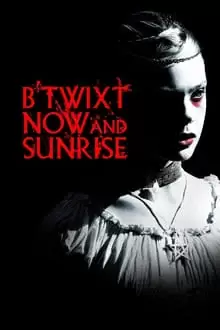
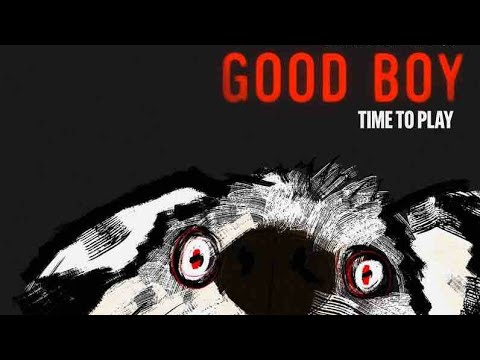

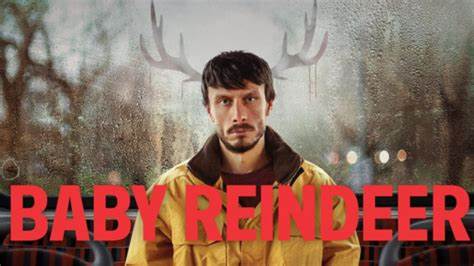
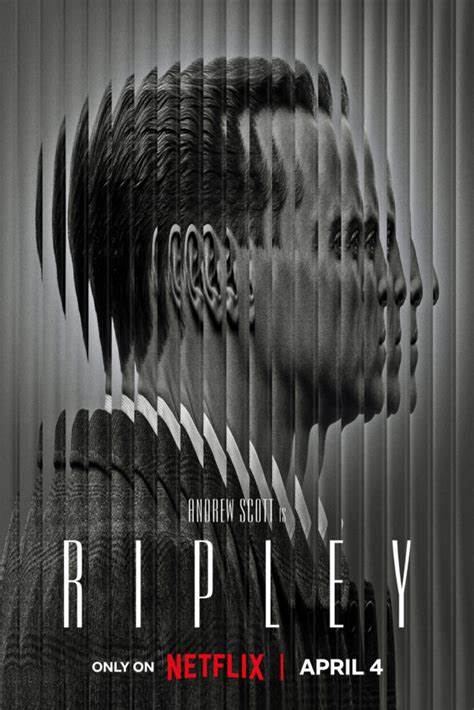
 RSS Feed
RSS Feed
